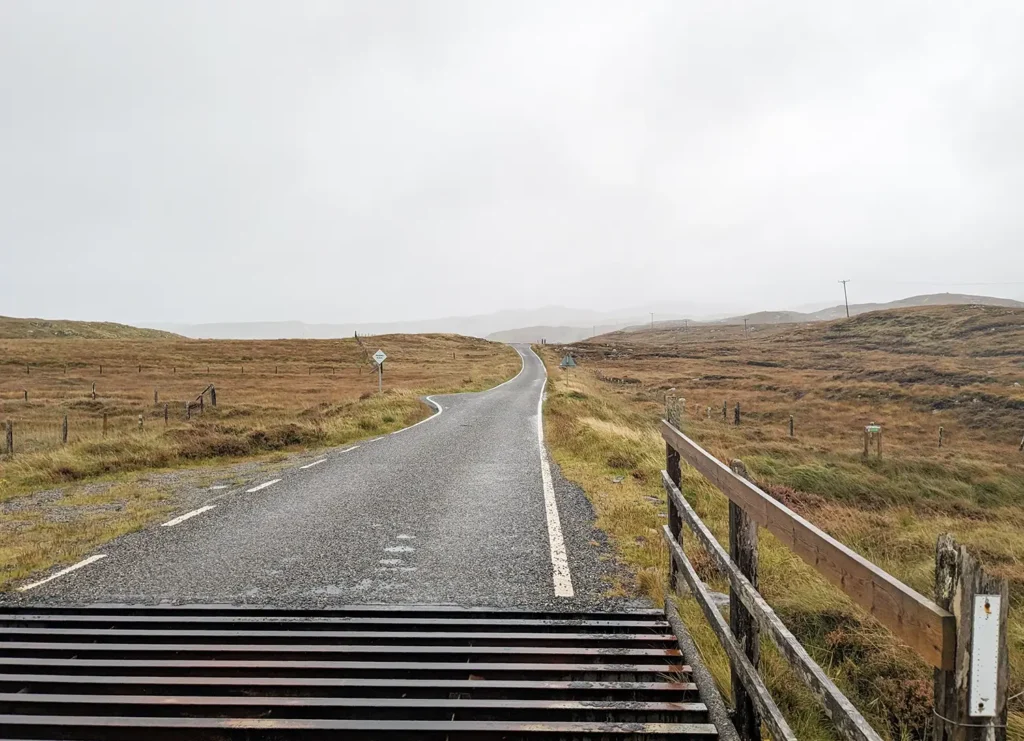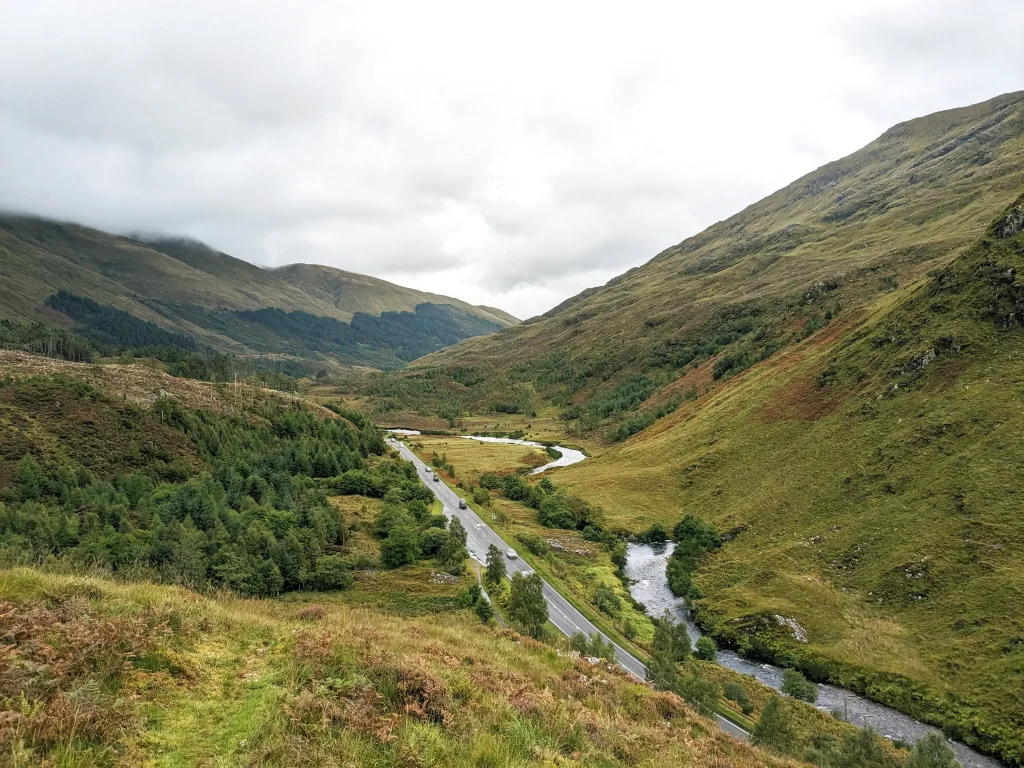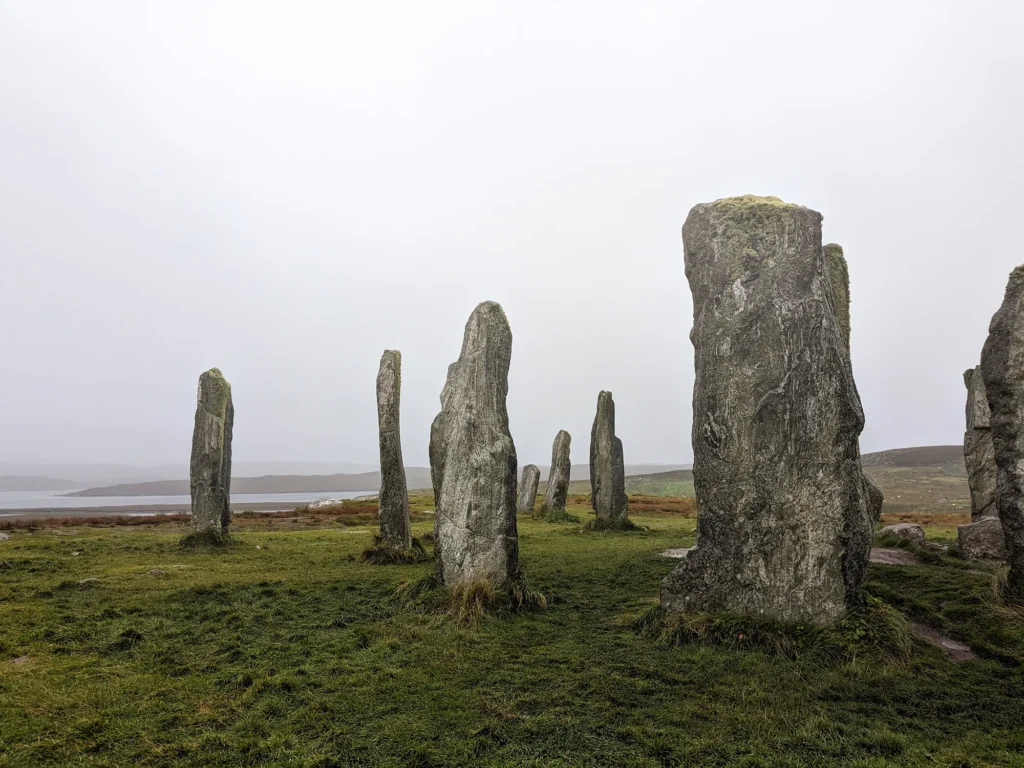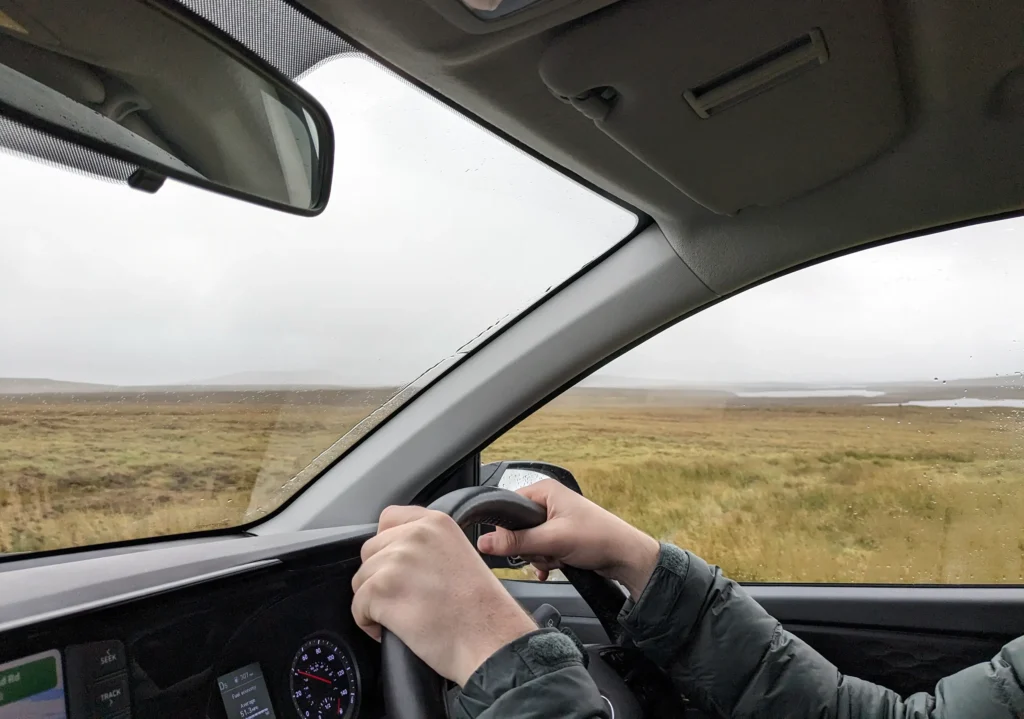What is a passing place?
Passing places are designated locations along a single track road where vehicles can safely pass each other. These areas are widened sections of the road, sometimes marked by a white sign with ‘passing place’ written in black. They’ll be surfaced with either extra tarmac or gravel, yet are designed to only provide enough space for one vehicle to pass at a time.
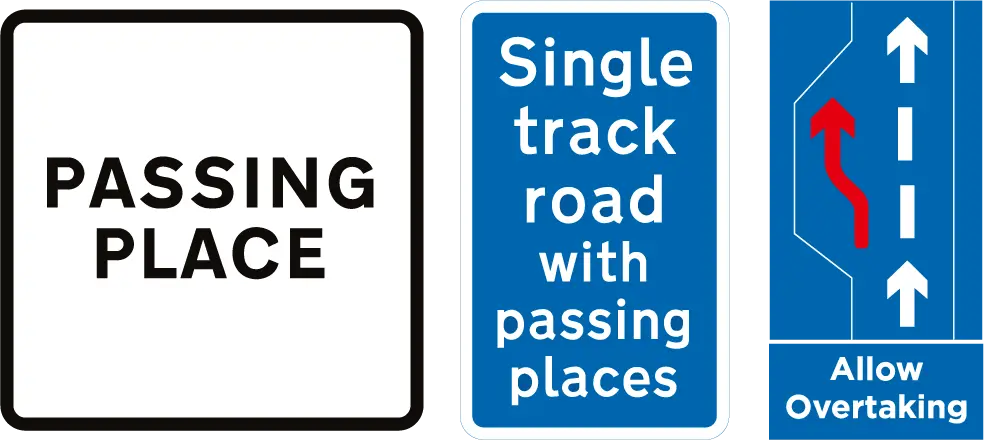
Where do you find single track roads in the UK?
Narrow roads are typically found in rural areas, particularly in regions with remote or less densely populated areas. They’re also used in areas where it’s impractical to build wider roads due to the landscape or cost constraints. During our Scotland road trip, the touristy areas we mostly encountered single track roads were the Lake District and on the Isle of Skye.
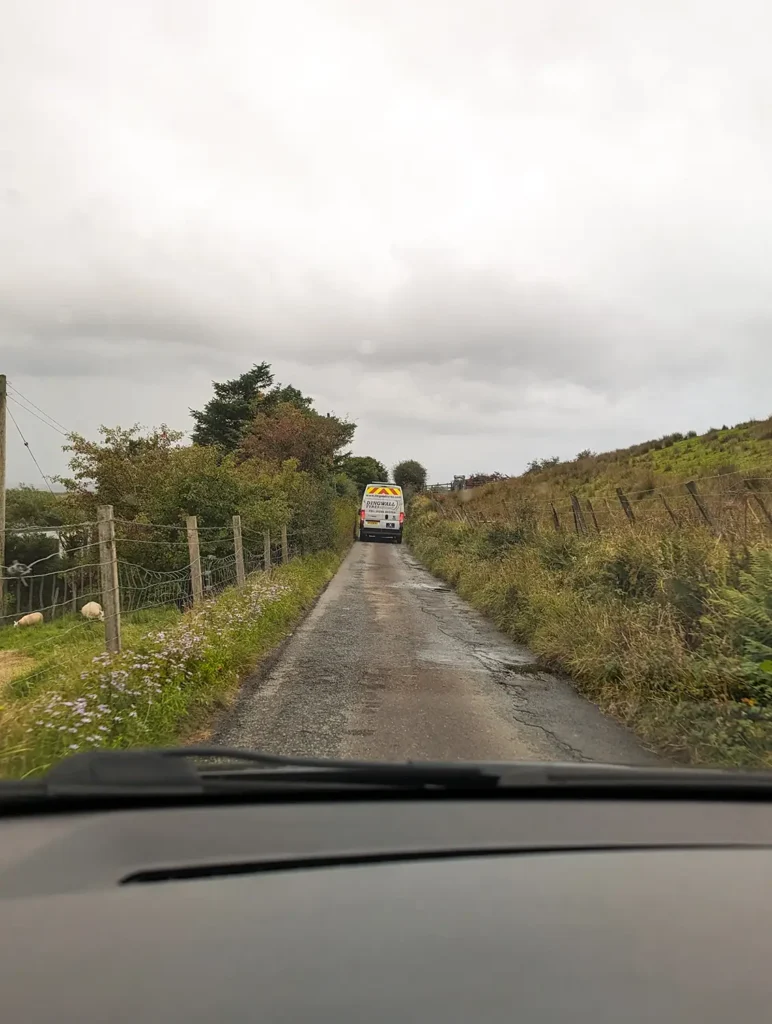
What should you do if you’re on a single-track road without passing place signs?
Not all single track roads have marked passing places, especially those further from popular tourist areas. In these cases it’s important to take note of any wider sections of the road while driving and always stick to the left so you’re prepared in case you encounter other vehicles.
During our road trip, my partner and I developed a habit of calling out “passing place” whenever we spotted one.
How to use a passing place
Giving way to oncoming traffic
The driver closest to the passing place typically gives way to the other vehicle and allows it to pass first.
If a passing place is on your side of the road (the left), pull into it and allow the oncoming vehicles to pass.
If the passing place is on the opposite side of the road (the right), leave this for the oncoming vehicle and pull up parallel to this spot.
Once the oncoming traffic has cleared you can continue on your way.
REMEMBER: Always stick to your left – do not cross to the right side of the road to wait in the passing place.
Be prepared to reverse. If you are nearest to the passing place, it is your responsibility to back up. Refrain from pushing through and don’t force others to pull off the road.

Watch a passing place being used
Unfortunately, I didn’t capture any video footage myself, but I’ve found an excellent video that shows passing places being used in Scotland.
Being courteous to other drivers
1. Use the courtesy wave
Courtesy is essential when using single track roads. When passing another vehicle, there’s often an exchange of gestures as a thank you for giving way. This is commonly known as a finger wave or courtesy wave, and involves lifting your fingers off the steering wheel as they pass by.
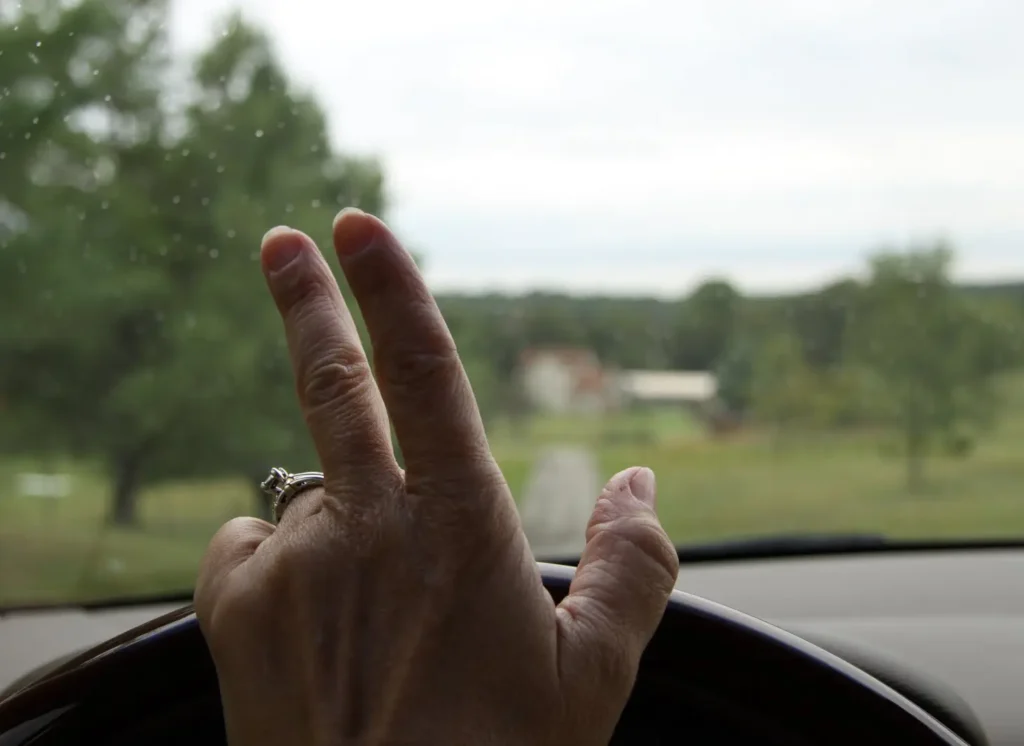
Image: itsasmalltownlife
2. Allow faster vehicles to pass
Another way to remain courteous on the road is by using passing places to allow faster vehicles to pass you. It’s common to feel more cautious on single track roads, and drive slower especially if you’re not familiar with driving on narrow roads. If so, you may encounter other vehicles approaching from behind, driven by more confident drivers or locals.
In these situations, when you reach a passing place, pull into the spot on your left (or wait opposite a passing place if on your right) and allow the other drivers to overtake. This is considered respectful and helps reduce congestion on the roads.
A final note: don’t park in passing places
While you may be tempted to stop for an incredible view, it’s important to remember that it’s illegal and unsafe to stop or park in a passing place.
